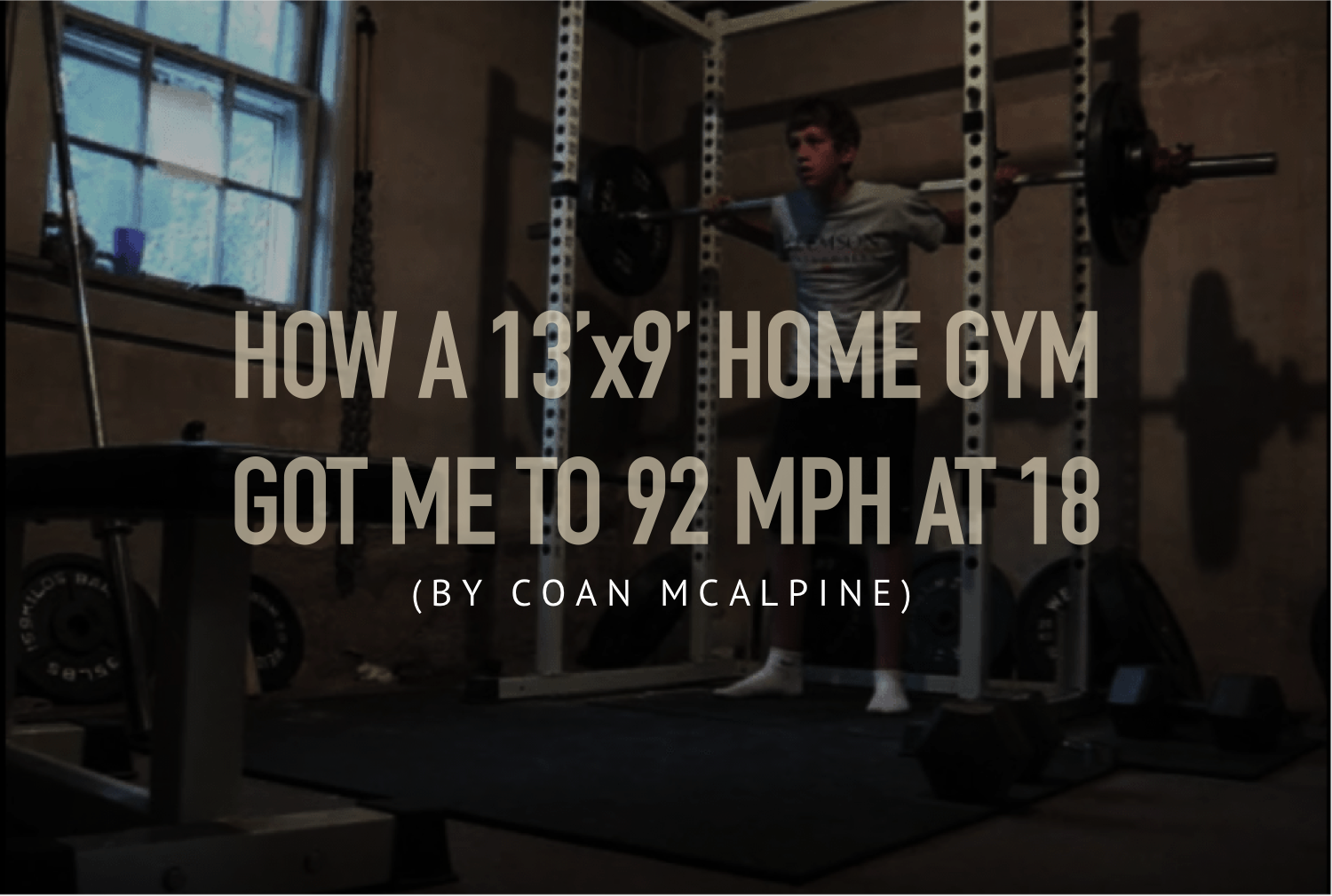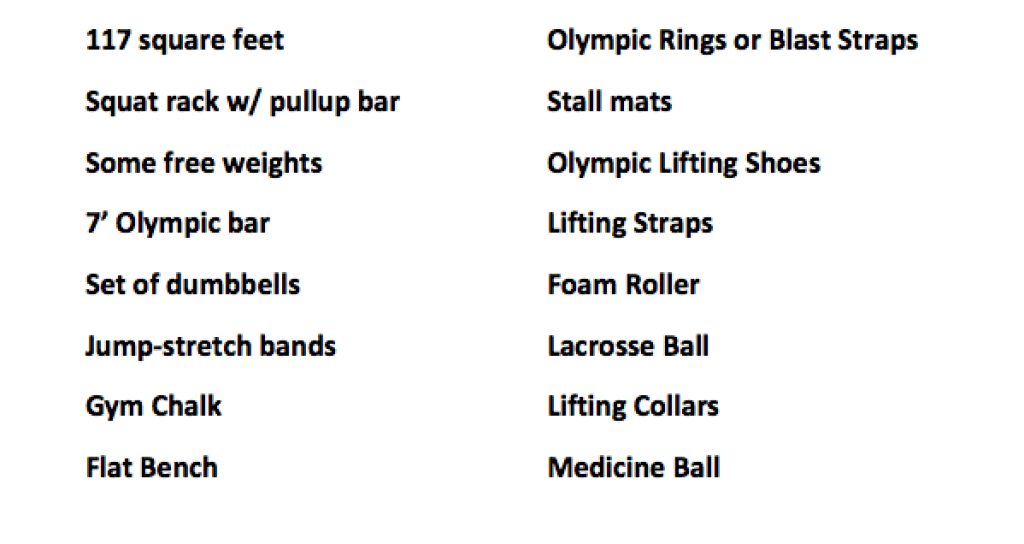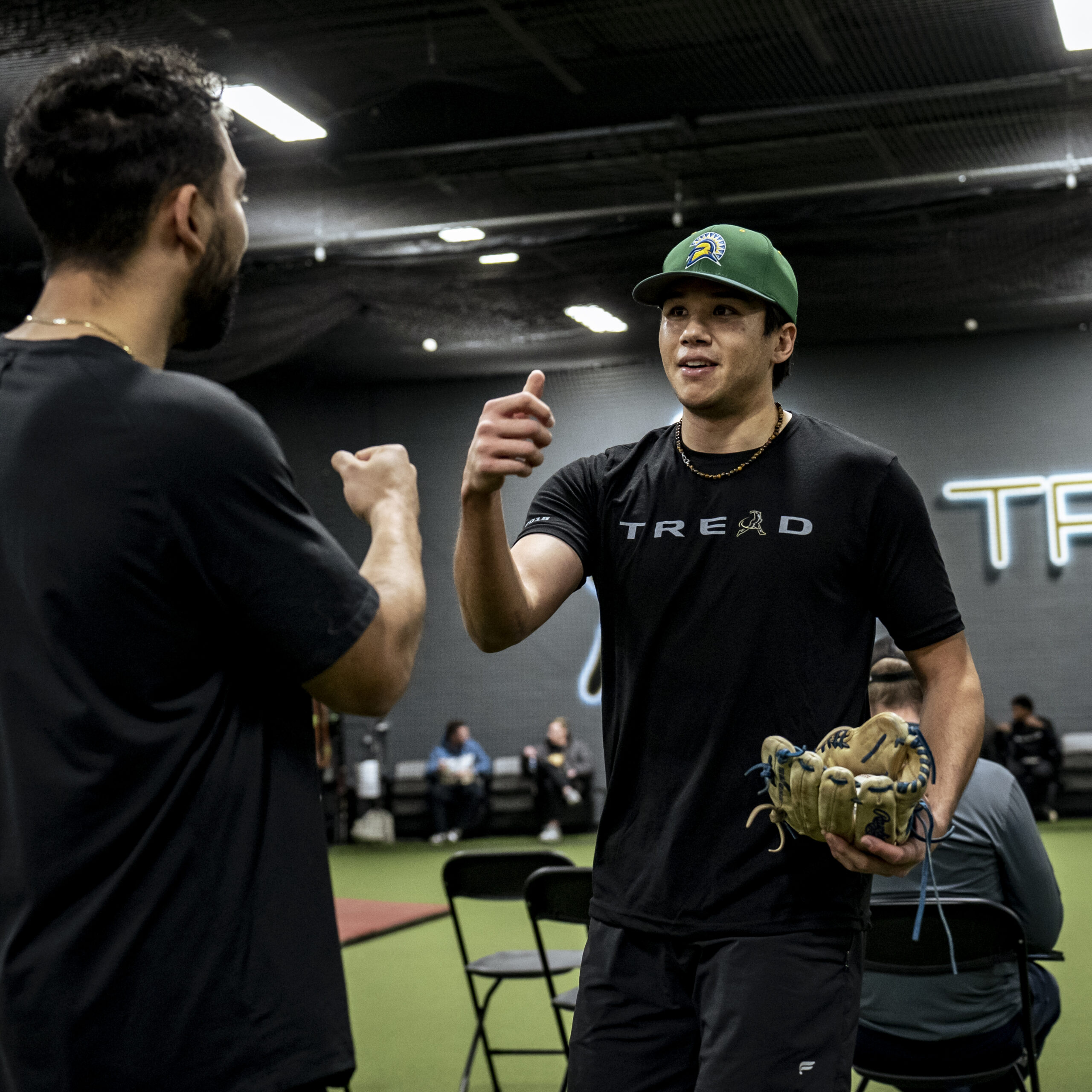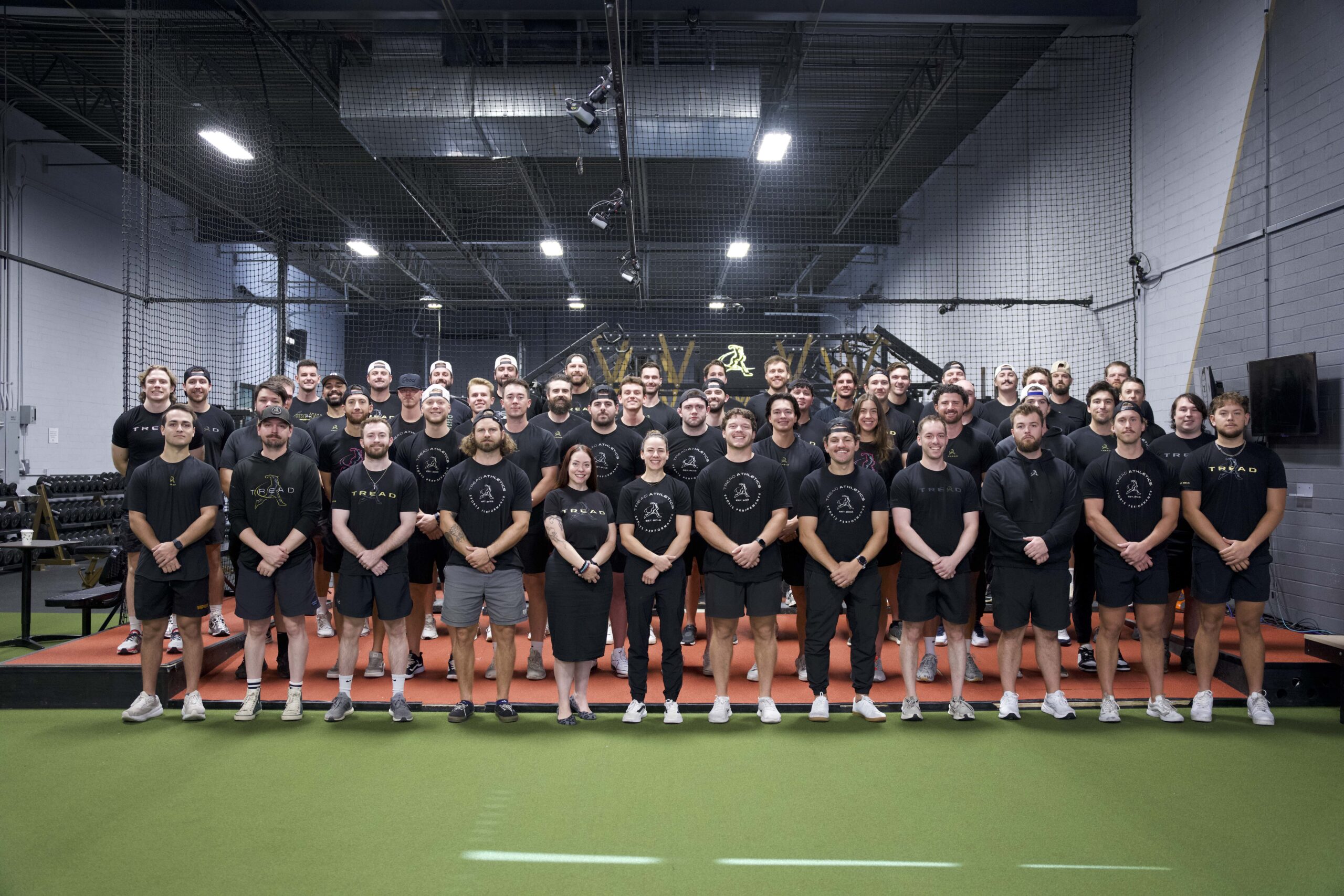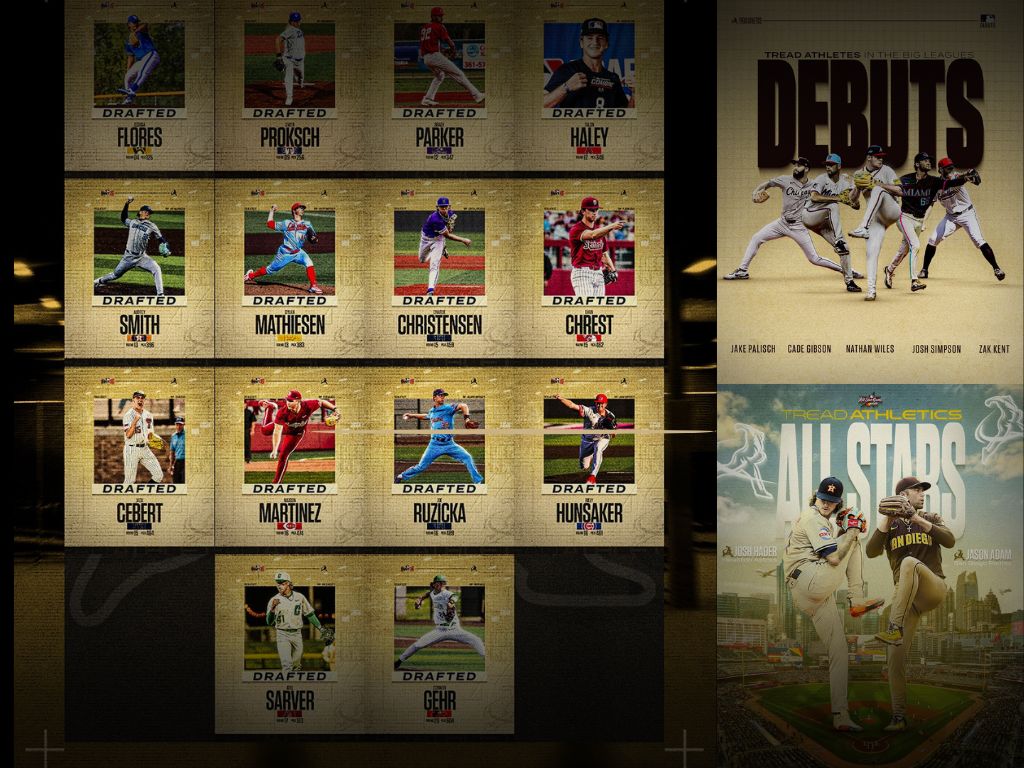Today’s article comes to you from Coan McAlpine, left-handed pitcher with TreadAthletics. From age 12 until age 18 he trained almost exclusively in a small room at his house, under the supervision of his older brother, going from a low 70s lefty at age 15 to a 6’4” 230+ pounder touching 92 in high school.
—
I entered high school with high hopes.
I was 14 years old, 6’0” tall and left-handed. I had potential. At the time, I viewed high school as a stepping-stone to the next level and beyond; however, things didn’t continue to come so easily…
Natural ability, my “genetics,” began to ensure me less and less. I soon realized that being a low-70s left handed pitcher characterized me as “another soft lefty.”
I refused to be defined by this category.
Without access to fancy equipment, and a 13’x9’ empty room, I devised a plan that would get me to my goals.
What I learned along the way: a good program, guidance, consistency, and a mastery of the basics will go much further than flashy facilities or the latest training fads.
The Equipment
The secret behind most transformations is that there is no secret. It took years and years of progression before I began to approach the player I wanted to be.
Too often, players jump to the sexy stuff before they have earned the right to do so.
They start a fancy plyometric program before they can squat their bodyweight for reps.
They spend $400 on a new baseball bat or glove every year when that money would be better spent on their own personal development.
Here are the top 3 reasons why this 13’x9’ room was a blessing for my development.
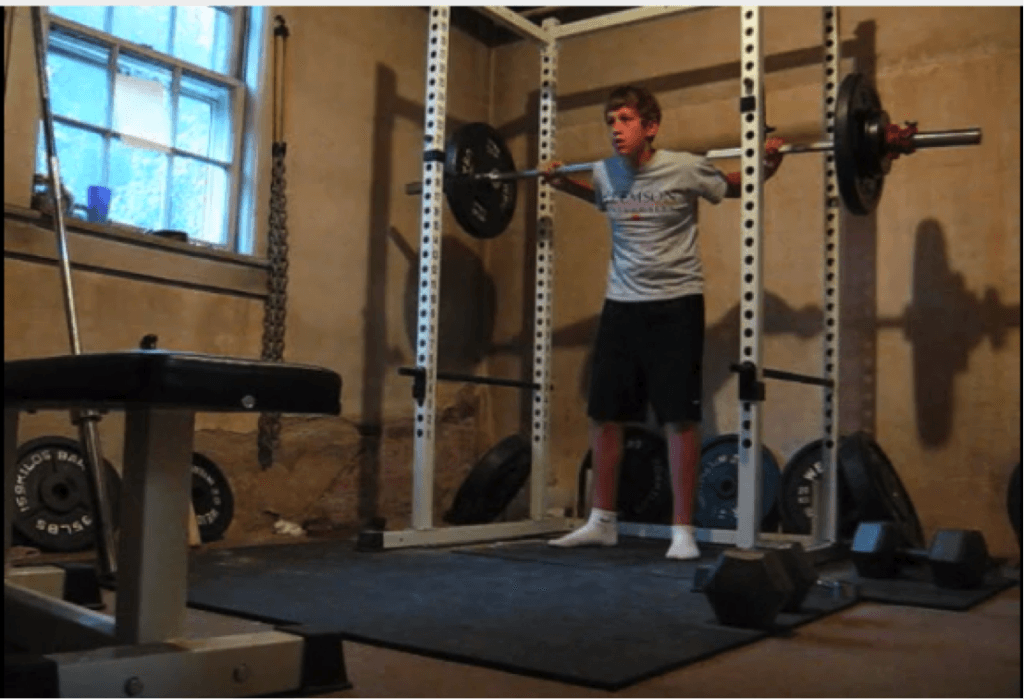
Some recent training footage.
—
#1 It focused my efforts on what I had, and filtered out distractions
Most kids from my area had access to fancy gyms with all of the accessories… the Lat Pulldown Machine, the Pull-up Assist Machine, the Curl Machine, and so on.
Oh, BOY! All of the possibilities.
I had to focus on the essentials as accessibility filtered out the unnecessary.
Looking back, dialing down on the fluff and progressing the meat and potatoes was the best thing I could have done.
I didn’t waste time testing all 50 machines in a commercial gym, or getting overwhelmed by misinformation.
Instead, I was properly taught about 10 key movements at age 12, and I spent the next 6 years working to progress and perfect them.
Fancy gyms are a minefield of distractions and white noise.
Very little of it matters.
The machines, fancy clothes, sweatbands, shaker bottles and pre-workout shakes.
The elaborate exercises and the 18 different bicep curl variations.
The ego.
Who do you become when you unrack the bar? How much better are you today than yesterday?
That’s what matters.
They say a four-hundred dollar bat can’t fix a four-dollar swing.
I would add that a multi-million dollar training facility can’t fix broken programming, a lack of desire and improper coaching.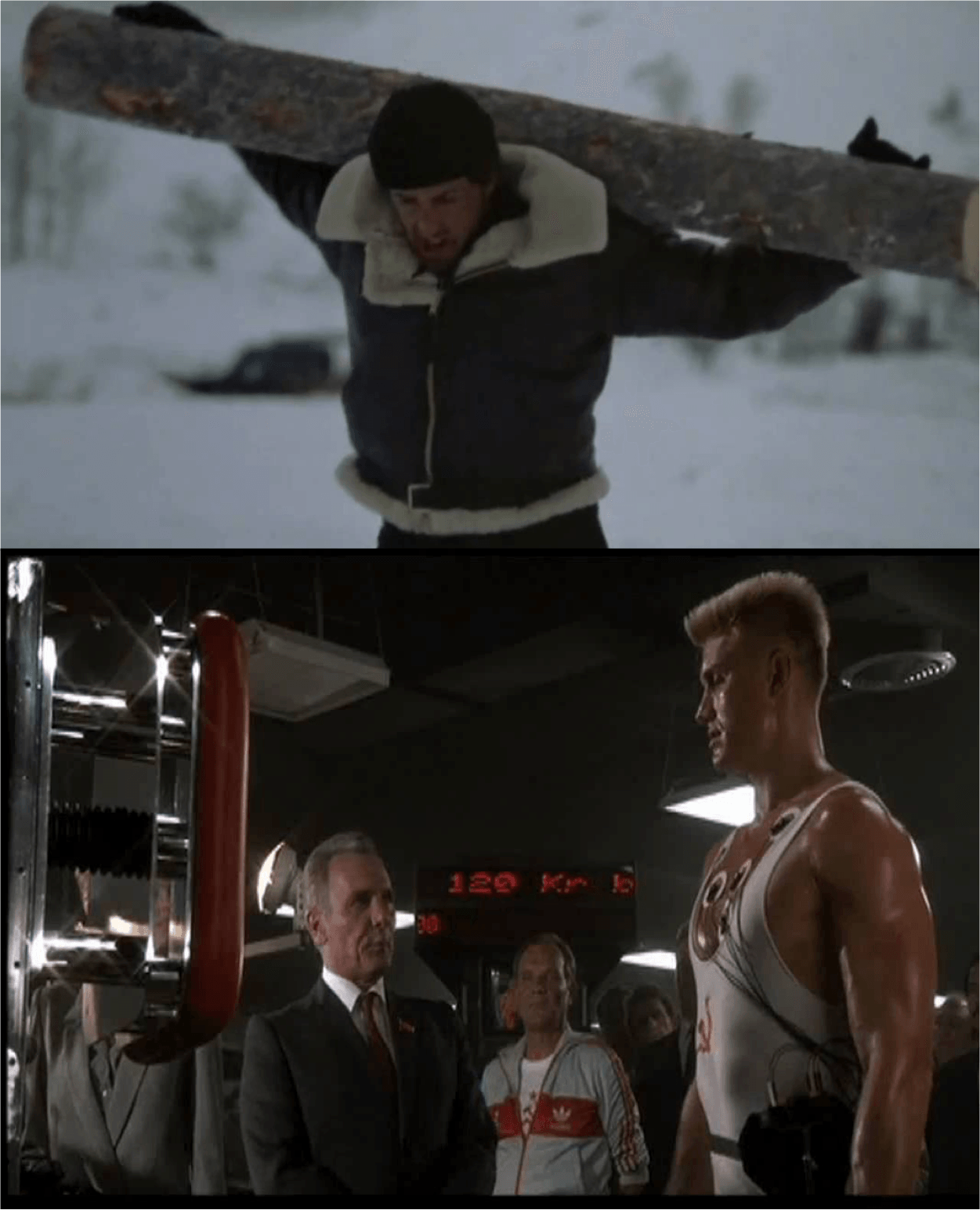
My suggestion: take pride in mastering the basics. Get piss strong. Have a qualified coach and mentor there to expedite your process. We spend too much time obsessing over what all of the other kids have, when the answer is laying right in front of us.
As my brother and mentor always reminded me,
“Control what you can control. Believe in the process. Control your inputs; monitor your outputs.”
These words still ring in my ears to this day.
—
#2 It developed my work ethic and identity
“Some of you, you spend so much time with other people, you spend so much time trying to get people to like you, trying to fit in that you don’t even know who you are. You study them, you know about them, you wanna hang out like them, you wanna be just like them. You’ve invested so much time in them that you don’t know who you are. I challenge you to spend time by yourself. I challenge you to take yourself out.” -Eric Thomas
Spend enough time training in a little room and you will get to know yourself.
You either figure out a way to develop confidence and work ethic, or you quit.
These things I can promise.
Training alone teaches you to embrace the suck.
Nobody is there to hold your hand – it becomes a battle against yourself.
My brother was my trainer, but he went off to college when I was 13. We kept in touch daily. But, for all intents and purposes, I trained alone in my home gym for most of my early career.
Fun? No.
Lonely? At times.
But I had a vision for myself and trusted that the process would get me there.
Training partners can be invaluable – but I firmly believe that athletes need to also be comfortable training when nobody is watching.
When nobody is pushing you.
When it’s just you against you.
This is how you discover what you’re really made of.
—
#3 It kept me focused on progression
Without distractions, and with only a handful of lifts to focus on, there is no option but to progress.
If progress stalls, there are less variables to worry about.
Over-recovered? You probably need more training volume to continue adapting.
Under-recovered? You probably need to address recovery and take a deload week.
Fairly simple.
Focusing on what matters, (and tracking/progressing it relative to your own personal bests) is the best way to continue making gains.
Working in a group environment begins to add in other factors like ego and peer pressure, and take away from an internally focused mindset.
Remember: it’s you vs. you.
It does not matter if the other kids are able to out-lift you in a particular exercise or even all exercises. You are where you are. Now, it’s up to you to change it. We all have our strengths and weaknesses. Identify the latter and train them.
—
Continuing the journey
Although I no longer train full time in that 13’x9’ room, it is what set the foundation for my training career.
That room helped define me.
It bled over into my habits, my training, and my work ethic.
It influenced me at the plate, on the mound, in the classroom, and in every other facet of my life.
Before you spend massive effort debating the little things, or wondering if the latest training gimmick is the magic bullet to your success, take a step back and first ask if you have a mastery of the basics.
Oftentimes, the answer is staring you right in the face.
—
Like what you read? Help us grow our reach by sharing it on social media! Thanks for reading.

